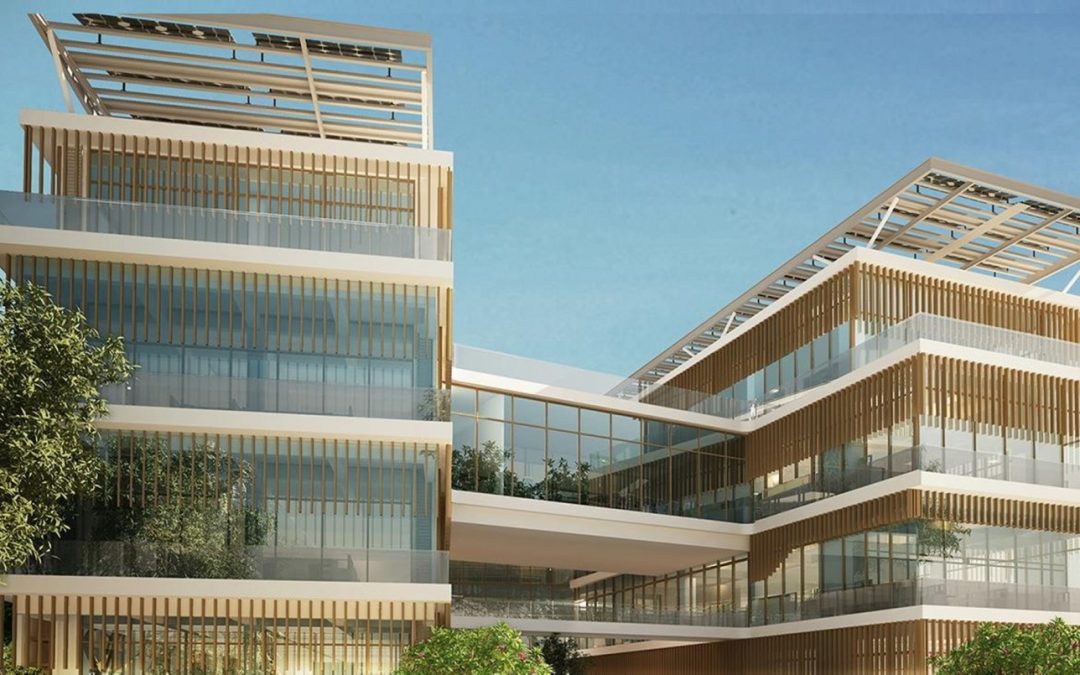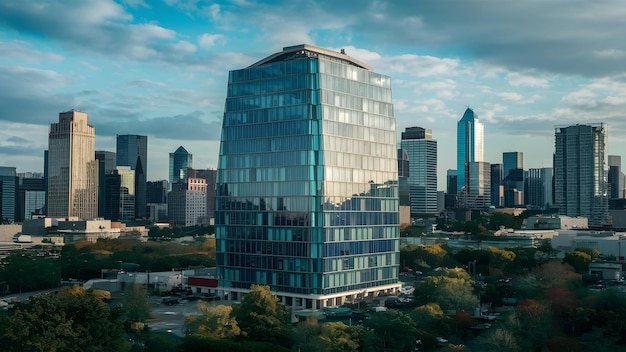The construction and architecture industries are in the midst of a profound paradigm shift. For decades, the focus was on speed, cost, and scale, often at the expense of the environment. Today, however, a new ethos has taken hold: eco-conscious building. This is more than just a trend; it’s a global movement driven by a growing awareness of climate change, resource depletion, and the vital need for sustainable living. Builders, architects, and homeowners alike are now seeking innovative, revolutionary methods to construct buildings that are not only beautiful and functional but also kind to the planet. This shift is reshaping every aspect of the building process, from the initial design to the materials used and the energy systems installed.
This comprehensive article will delve into the most impactful and groundbreaking eco-conscious building trends of today. We will explore the technologies, materials, and design philosophies that are defining this green revolution. Our goal is to provide a detailed, in-depth look at how we can create a built environment that harmonizes with nature, reduces our carbon footprint, and promotes a healthier, more sustainable future for all.
The Foundation of Sustainability

The choice of building materials is the single most significant factor in a building’s environmental impact. Traditional materials like concrete and steel are energy-intensive to produce and contribute a massive amount of carbon to the atmosphere. The new wave of eco-conscious building is all about finding smarter, greener alternatives.
- A. Reclaimed and Recycled Materials: The phrase “one man’s trash is another man’s treasure” has found its perfect application in sustainable construction. Architects are increasingly sourcing materials from deconstructed buildings, such as reclaimed wood beams, old bricks, and even salvaged steel. This practice reduces the demand for new, raw materials and prevents usable items from ending up in landfills. It also gives a building a unique character and history.
- B. Mass Timber and Cross-Laminated Timber (CLT): This is perhaps one of the most revolutionary material trends. Mass timber, which includes products like CLT, is made by laminating layers of wood together to create incredibly strong and durable structural panels. It has a significantly lower carbon footprint than concrete or steel, as it sequesters carbon from the atmosphere. Buildings up to 18 stories tall are now being constructed entirely from mass timber, proving its viability for large-scale projects.
- C. Bamboo and Other Rapidly Renewable Resources: Bamboo is a remarkable material. It grows incredibly fast, requires minimal water, and doesn’t need pesticides. It has a tensile strength comparable to steel, making it an excellent sustainable alternative for everything from flooring and cabinetry to structural elements. Other rapidly renewable resources like cork and straw bales are also gaining traction for their insulative properties and low environmental impact.
- D. Recycled and Eco-Friendly Insulation: Traditional fiberglass insulation is not always the most sustainable choice. New, greener alternatives are now available, such as insulation made from recycled denim, recycled paper (cellulose), and even sheep’s wool. These materials offer comparable or superior thermal performance while being non-toxic and biodegradable.
- E. Green Concrete and Hempcrete: Concrete production is responsible for about 8% of global CO2 emissions. Researchers are developing “green concrete” that replaces a portion of the cement with industrial by-products like fly ash or slag. Another revolutionary material is hempcrete, a mixture of hemp hurds and a lime-based binder, which is not only carbon-negative but also lightweight and highly insulative.
Innovative Design Philosophies and Techniques
Beyond materials, the way a building is designed and constructed is undergoing a dramatic transformation. The goal is to maximize efficiency and minimize waste from the very start.
- A. Biophilic Design: This philosophy seeks to connect building occupants with nature. It involves incorporating natural elements like abundant plant life, natural light, and views of the outdoors. The benefits of biophilic design are well-documented, including reduced stress, increased productivity, and improved well-being. This can be as simple as adding a green roof or an interior living wall.
- B. Passive House Principles: The Passive House standard is a rigorous, voluntary building standard that results in a building requiring very little energy for heating or cooling. It focuses on maximizing efficiency through superior insulation, airtight construction, high-performance windows, and a ventilation system that recovers heat. A Passive House can be up to 90% more energy-efficient than a conventional building, proving that a home can be comfortable without a massive energy bill.
- C. Net-Zero and Net-Positive Buildings: A net-zero energy building produces as much energy as it consumes over the course of a year, typically through on-site renewable energy sources like solar panels. A net-positive building goes a step further, generating more energy than it uses, with the excess being fed back into the grid. This is the ultimate goal of sustainable building, creating structures that are not just benign, but actively beneficial to their environment.
- D. Prefabrication and Modular Construction: This method involves building parts or entire sections of a structure in a factory and then assembling them on site. It reduces waste, improves quality control, and significantly cuts down on construction time and disruptions. Prefabricated homes can be designed with a high level of precision and energy efficiency, making them a cornerstone of modern eco-conscious building.
- E. Waste Management and Water Conservation: Sustainable construction projects prioritize waste reduction from the outset. This includes careful material ordering to minimize excess and a robust plan for recycling and reusing construction waste. Furthermore, buildings are being designed with advanced water conservation systems, such as rainwater harvesting for non-potable uses like flushing toilets and irrigation, as well as greywater recycling systems.
The Smart Green Building

Technology is a critical enabler of the eco-conscious building revolution. Smart systems are making buildings more efficient and responsive, while renewable energy sources are powering them in a clean way.
- A. Advanced Building Automation Systems (BAS): A smart building is an efficient one. A BAS integrates and automates a building’s systems, including HVAC, lighting, security, and energy management. It can use sensors and real-time data to optimize energy usage, for example, by automatically turning off lights in an empty room or adjusting the temperature based on occupancy.
- B. Solar Panels and Integrated Photovoltaics (BIPV): Solar panels are no longer just an add-on; they are becoming an integral part of a building’s design. Building-Integrated Photovoltaics (BIPV) are solar cells that are seamlessly incorporated into building materials, such as roofing tiles, facades, and windows, making them both functional and aesthetically pleasing.
- C. Geothermal and Air-Source Heat Pumps: These systems are a highly efficient way to heat and cool a building. Geothermal systems use the stable temperature of the earth to provide heating and cooling, while air-source heat pumps extract heat from the air outside and transfer it indoors. Both are far more energy-efficient than traditional furnaces and air conditioners.
- D. Smart Glazing and Dynamic Windows: These innovative windows can change their opacity or tint in response to sunlight or an electrical signal. This helps to regulate a building’s internal temperature, reduce glare, and cut down on the need for artificial lighting and air conditioning, all while improving occupant comfort.
Conclusion
The revolutionary eco-conscious building trends we’ve explored are not a fleeting fancy but a fundamental and necessary shift in how we conceive, design, and construct our living and working spaces. From the transformative use of mass timber and reclaimed materials to the intelligence of a smart, biophilic design, these innovations are proving that sustainability and high performance can go hand-in-hand. The future of architecture is not just about creating beautiful structures, but about building a better, more resilient world. This movement is driven by a deep understanding that our built environment has a monumental impact on the health of our planet and its inhabitants.
The challenges are significant, including the initial cost of some materials and the need for new skills and technologies in the construction industry. However, the long-term benefits—reduced energy consumption, lower maintenance costs, and a healthier environment—far outweigh the initial hurdles. For a homeowner, this means a more comfortable, energy-efficient, and valuable home. For the planet, it means a tangible step towards mitigating climate change and preserving our natural resources. The ultimate goal is to create a built environment that is regenerative, a world where our buildings are not just passive consumers of energy but active contributors to a healthier ecosystem. This revolution is already in motion, and every sustainable choice we make, from the materials we select to the technologies we adopt, brings us closer to a truly green and vibrant future.






